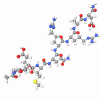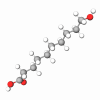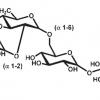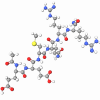It has long been recognized that specific polysaccharides, mannans, contribute to the beneficial effects of Aloe vera. Concurrently the activity of yeast-derived adjuvants such as zymosan have been determined to be a result of the mannans and glucans present.
βetavera ® combines the active polysaccharide fractions of both substances. Aloe Barbendensis Miller (Lilaceae) is widely used in cosmetics and herbal medicine for the treatment of topical disorders. As a material, Aloe vera has been studied extensively in terms of both composition and efficacy. It is now generally accepted that the benefits of Aloe come not from one single component but from the combination of all the components. It is the interrelationship of the different components of Aloe that makes the water present critical. It is only in aqueous media that the full benefits of Aloe vera are realized.
Critical in the activity of Aloe vera are the mannose-based polysaccharides present. Specifically, partially acetylated β-1,4-mannans show high affinity for specific receptors on both macrophage and fibroblasts. Stimulation of these cells not only causes an increase in the production of collagen and proteoglycans but also increases immune response. Concurrently Aloe, because of its Salicylic Acid content, can inhibit prostaglandin and thromboxane formation, by blocking the Arachidonic Acid Cascade.
Zymosan, traditionally used as an adjuvant is isolated from yeast (Saccharomyces cerevisiae) cell walls. Work done to reveal the composition of this material shows that it is composed of a-D-mannans and β-D-Glucans. Current research has indicated that glucan particles accentuate the capacity of macrophages to distinguish foreign materials.Currently, substantially purified β-1,3-glucans are being used in topical preparation to revitalize the skin. It has been demonstrated that β-1,3-glucans can smooth the skin, reduce redness, and minimize the appearance of fine lines. β-1,3-glucans have also been shown to significantly increase macrophage activity. The advantage of β-1,3-glucans derived from yeast over other glucans is the avidity with which they bind to the glucan receptor of the macrophage.











